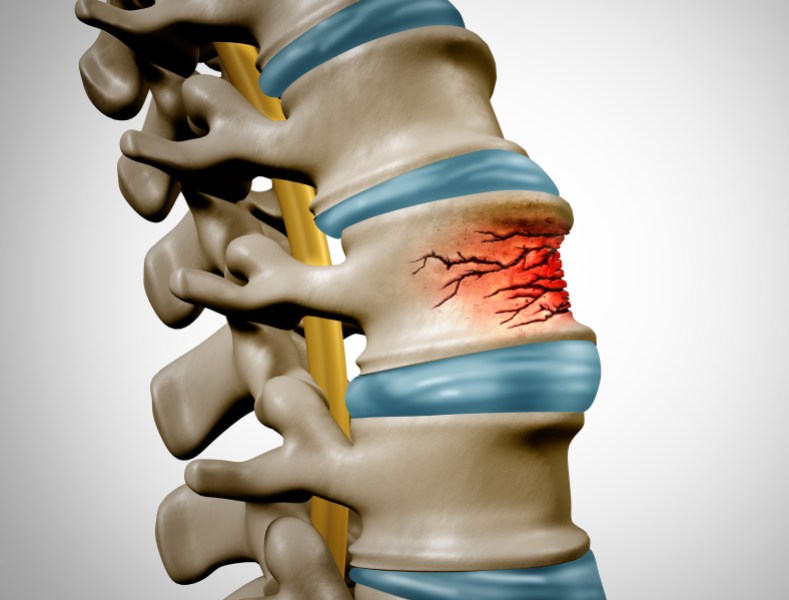How type 2 diabetes causes lower back pain


Spinal fractures and disc degeneration is a common problem for diabetics. Photo: Getty
When you’re first diagnosed with type 2 (T2) diabetes, you’re given a list of awful things waiting down the track.
T2 sugar spikes damage the large blood vessels of the heart, brain and legs. Indeed, cardiovascular disease is the main cause of death among people with diabetes.
If you have diabetes, you can be up to four times more likely to have a heart attack or stroke than people who don’t.
Then there’s the damage to the small blood vessels, with those sugar spikes causing problems in the eyes, kidneys, feet and nerves.
You can go blind, have your feet chopped off and suffer permanently with searingly painful pins and needles at your extremities.
What you may not hear about is how type 2 diabetes can wreck your bones and joints. Your spine really cops it.
There’s spinal stenosis, a narrowing of the bony openings of the spine, which leaves less space for the exiting spinal nerves. It appears that diabetes is associated with the development of spinal stenosis, particularly in the lumbar region of the spine.
According to a 2010 study, up to 25 per cent of patients with lumbar spinal stenosis were found to have diabetes and/or high blood pressure.

Osteoporosis causes vertebral fractures. Photo: Getty
Another issue for people with T2 is vertebral fracture (the bones of the spinal column) from osteoporosis.
It’s thought that diabetes alters the amount of minerals in the bones, making them more fragile and prone to fracture.
There’s a fair bit of guesswork going on here, as researchers try to understand and explain these strong links between T2 and back issues.
A breakthrough
Another common problem for people with type 2 diabetes is lower back pain.
Evidence has shown that after more than 10 years of living with diabetes, you’re at greater risk of developing painful disc degeneration in the lumbar spine (lower back).
If the diabetes remains uncontrolled for that duration of time, the increased risk for lumbar degenerative disc disease is compounded further.
However, the precise mechanisms of disc degeneration in diabetics have been unclear. Until now.
A team of engineers and physicians from the University of California San Diego, UC Davis, UCSF and the University of Utah have described the mechanics of T2-related vertebral disc breakdown.
In experiments with rats, they found that T2 “alters the behaviour of discs in the vertebral column, making them stiffer, and also causes the discs to change shape earlier than normal”.
As a result, “the disc’s ability to withstand pressure is compromised”.
Using specialist X-ray technology, the researchers compared discs from healthy rats to those from rats with type 2 diabetes.
The healthy rats showed that collagen fibrils (a matrix of stiff structures that provide mechanical durability and strength) rotate and stretch when discs are compressed, allowing the disc to dissipate energy effectively.
“In diabetic rats, the way vertebral discs dissipate energy under compression is significantly impaired: Diabetes reduces the rotation and stretching of collagen fibrils, indicating a compromised ability to handle pressure,” the researchers write, in a newly published paper.
And what does the research offer people with T2?
“These findings,” the researchers write, “provide novel insight into the potential mechanisms underlying diabetes-related disc tissue damage and may inform the development of preventative and therapeutic strategies for this debilitating condition”.
In the meantime, keep walking and get your weight down. A significant drop in weight from a calorie-controlled diet provides a pathway to remission.
As we previously reported, research from Deakin University’s Institute for Physical Activity and Nutrition has shown that the prevalence of type 2 diabetes has tripled over the past 30 years in Australia.








